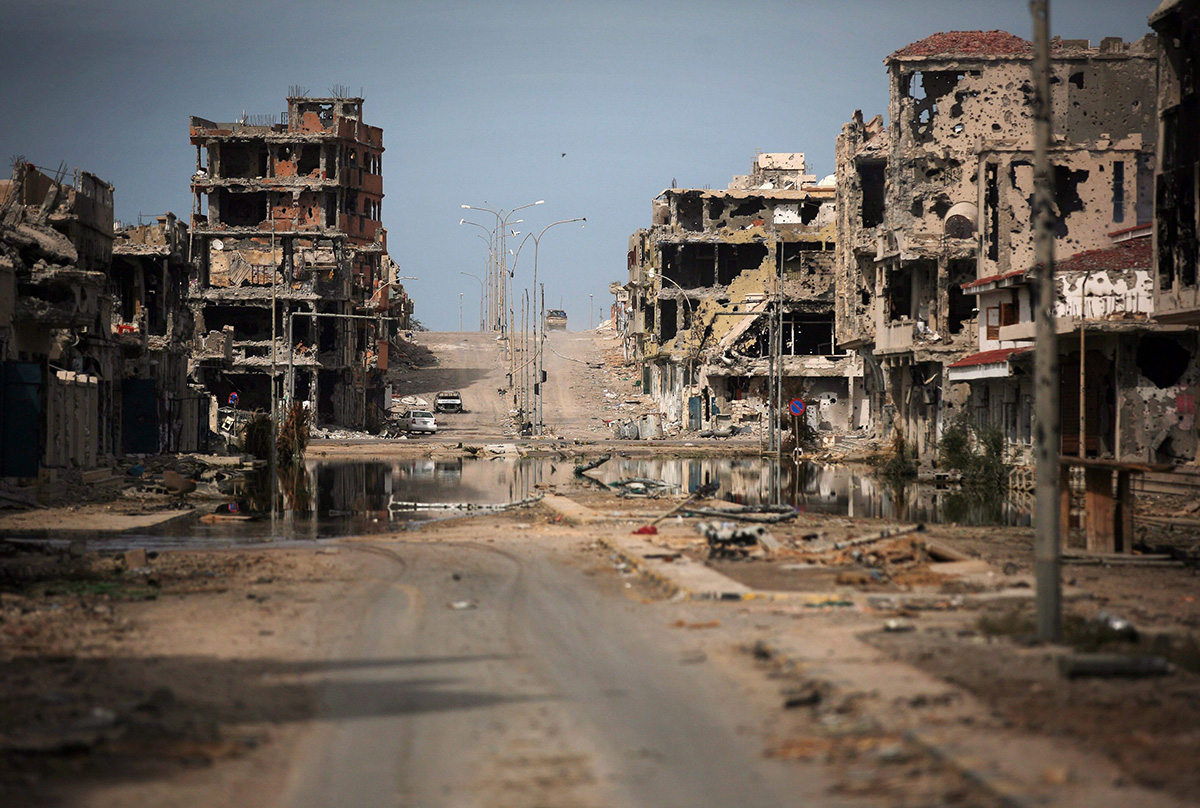Secretary-General Ban Ki-moon says fighters in Libya are facing the “distinct possibility” of defeat in their last stronghold and are likely to scatter elsewhere in the North African country and the region.

The U.N. chief said in a new report to the U.N. Security Council that member states’ estimates of the number of ISIS fighters range between 2,000 and 7,000 from Libya, Tunisia, Algeria, Egypt, Mali, Morocco and Mauritania.
Ban said one member state recently reported between 3,000 and 4,000 IS fighters in Sirte, the extremist group’s last bastion along Libya’s northern coast which he called “the most active war front” in the country.
WATCH: Islamic State group claims Germany axe attack

But he said as a result of the recent offensive against ISIS, by forces aligned with the U.N.-brokered government and others, “the current number of those in Sirte is now likely well under 1,000,” with large numbers of those who have recently fled the city likely relocating and regrouping “in smaller and geographically dispersed cells throughout Libya and in neighbouring countries.”
According to one unnamed U.N. member state, Ban said dozens of Tunisians fighting for IS have already returned home “with the intent to conduct attacks.”
READ MORE: German train attacker may have been self-radicalized: Official
The secretary-general said in the report on the threat posed to Libya and neighbouring countries by foreign fighters, obtained Tuesday by The Associated Press, that the current political divide in Libya continues to make the country attractive for foreign fighters who are actively recruited by IS and al-Qaida-linked groups to boost their military capabilities.
Libya slid into chaos after the uprising that led to the ouster and killing of longtime autocrat Moammar Gadhafi in 2011. The power and security vacuum left the country a breeding ground for militias and militants including the IS group and al-Qaida affiliates.
WATCH: Battle for Fallujah against Islamic State intensifies

Since 2014, Libya has been split between rival governments and parliaments based in the western and eastern regions, each backed by different militias and tribes. A U.N.-brokered deal in December to create a unity government has reached a deadlock, due to political jockeying and the new government’s inability to put together an action plan to provide basic services.
Ban said IS propaganda in March 2015 and again in April 2016 called for supporters to travel to Libya instead of Iraq or Syria. He said the largest group of foreign fighters currently operating in Libya are individuals linked to IS, and they dominate the extremist group’s top leadership.
Foreign fighters have also joined Al-Qaida in the Islamic Maghreb which periodically infiltrates Libya and uses the country as a rest stop and for training and buying arms, he said.
Another prominent group of foreign fighters in Libya are members of Ansar Al-Sharia in Tunisia, another al-Qaida affiliate, which continues to train its forces in Libya near the Tunisian border, the secretary-general said.



Comments